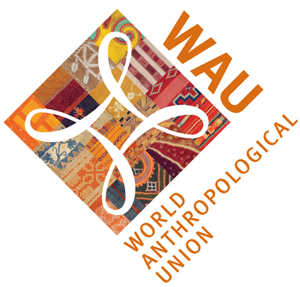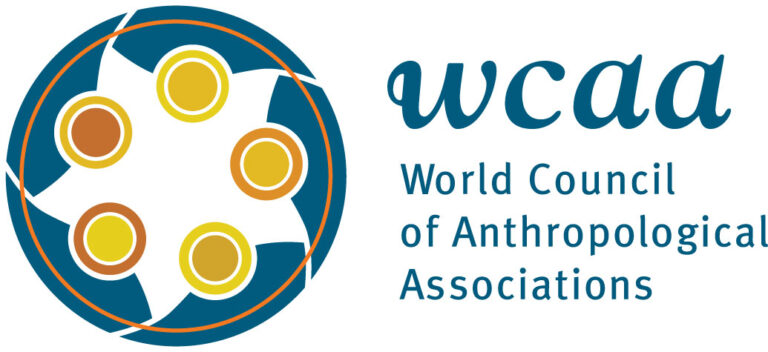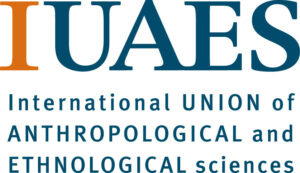
Archambault, Julie Soleil (2012). "Travelling While Sitting Down": Mobile Phones, Mobility and the Communication landscape in Inhambane, Mozambique. Africa, 82, pp. 393-412.
This article examines the ways in which young men in the city of Inhambane, southern Mozambique, harness communication to express and address experiences of constrained physical and social mobility. It starts with an analysis of a highly valued form of oral communication – bater papo – that youth, especially young men, engage in on a daily basis before turning to mobile phone use. Tying these different forms of communication together is a profound desire to claim membership of, and to participate in, a world that remains elusive for most. However, if mobile phone communication builds on pre-existent forms of communication, it takes on particular aesthetic qualities that speak of, rather than resolve, exclusion. The article argues that, while helping bridge distances in significant ways, mobile phone communication nonetheless, and somewhat ironically, also betrays young men's immobility.
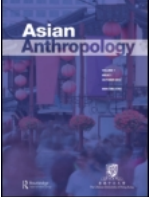
Cohen, Erik (2012) Fetuses in a Thai Buddhist Temple as Chaotic Irruption and Public Embarrassment. Asian Anthropology, Issue 11, pp. 1-20.
In late 2010, about 2000 human fetuses were discovered in the mortuary of a Buddhist temple in Bangkok. This article examines the subsequent affair from two perspectives: the magico-religious and the socio-political. The first deals with the fetuses as a symbol: it examines the beliefs regarding fetuses in Buddhism and Thai folk religion, and the manner with which the irruption of the fetuses into the Buddhist temple was dealt with. The second deals with the fetuses as an exposure of a widespread social problem with complex legal and social policy implications, and the way the authorities treated it. The two perspectives are related through Buddhism, which helped to resolve the magico-religious issue of dispatching the fetuses’ spirits, while constituting a barrier to the resolution of the socio-political issue of change in the Thai abortion law. This created an irresolvable conundrum: the issue of abortion cannot be resolved in a sustainable way without affecting some of the fundamental premises on which Thailand's abortion law and its “regime of images” is based. The authorities preferred to uphold the law and sustain the image, rather than to resolve the basic underlying problem of which the discovered fetuses were just the most blatant symptom. This problem is the discrepancy between the restrictive abortion law and current sexual practices, which have engendered a growing demand for abortions by the younger generation of Thai urbanites.
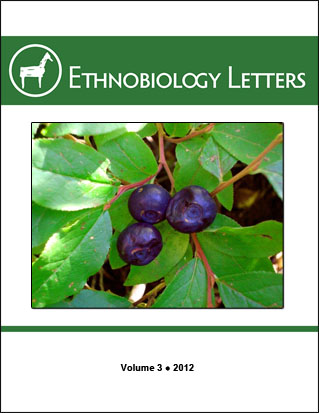
Coimbra, Jr., Carlos E. A. (2012). Defoliator Pest to Caboclos and Gourmet Food to the Suruí Indians: Contrasting Amazonian Perspectives of Lusura sp. Caterpillars. Ethnobiology Letters, Vol.3, pp. 56-60.
Keywords: Amazonia, Indigenous peoples, Brazil nut tree, Insects as food, Ethnoentomology
The use of a Lusura sp. (Lepidoptera: Notodontidae) caterpillar as food by the Suruí Indians from the southwestern Brazilian Amazon is reported in the context of family collecting excursions during arboreal infestations observed in July-August 1983. This caterpillar erupts in very large numbers on Brazil nut trees, denuding them of foliage. The paper calls attention to contrasting views about these caterpillar infestations among different inhabitants of the forest, being considered a desirable food delicacy by the Suruí and a destructive pest defoliator by caboclos.
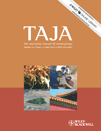
Corboz, Julienne (2013). Third-way Neoliberalism and Conditional Cash Transfers: The Paradoxes of Empowerment, Participation and Self-Help Among Poor Uruguayan Women. TAJA: The Australian Journal of Anthropology, Vol. 24, pp. 64–80.
Keywords: Conditional cash transfers, gender, Latin America
The Latin American literature on Conditional Cash Transfer (CCT) welfare programs has typically involved the quantitative evaluation of social and economic impact, with fewer studies addressing the qualitative and gendered impacts of CCTs. Drawing from ethnographic fieldwork in poor squatter settlement communities in Uruguay, this article explores the everyday social realities of poor single mothers who have been disconnected from their kinship networks and must rely on CCT payments for survival. I locate these women’s experiences within the third-way neoliberal discourses of ‘empowerment’, ‘participation’ and ‘self-help’ espoused by the state, and the various structural conditions, including crime, violence and unequal gender relations, that impact negatively on women’s abilities to comply with their social and civic duties. I argue that rather than producing responsible and empowered subjects, Uruguay’s recent CCT welfare program has paradoxically limited some women’s participation in civic and public life and reproduced their dependent relations with men.

Dorđevic, Ivan (2012). Twenty Years Later: The War Did (not) Begin at Maksimir: An Anthropological Analysis of the Media Narratives about a Never Ended Football Game. Bulletin of the Institute of Ethnography SASA, Vol. LX (2), pp.201-214.
Keywords: football, Maksimir, the media, nationalism, national mythology
The aim of this work is an analysis of the media narratives about the never ended football match between Dynamo Zagreb and Red Star Belgrade on May 13 1990. The article focuses on the media coverage twenty years after the incident in the context of the game's acquired mythic status, symbolically marking the beginning of the war in former Yugoslavia. The object of the analysis are Serbian and Croatian media with the aim of revealing the strategies of representing this event in the period of the normalization of the relations in the region.

Ferrández, Luis Fernando Angosto (2012). The Omnivorous Science: Jean and John Comaroff on the Politics of Anthropology, Capitalism and Contemporary States. AIBR Revista de Antropología Iberoamericana, Vol. 7 (3), pp.271 – 296.
Keywords: Jean Comaroff, John Comaroff, Culture, Omnivorous science
Few social scientists reach the status of contemporary classics. Jean and John Comaroff are among those who could be included in that category. Their current work is indeed on the crest of the wave of social analysis, but at least since the 1980s it has been followed, debated and also challenged within the field of anthropology. Beyond this disciplinary area, their work has resonated and continues to resonate in the spheres of sociology, politics and legal studies, in a clear demonstration of the strength and the potential of anthropological knowledge when it engages the ‘big issues’. It is only a part of the written production of John and Jean Comaroff that has been translated into Spanish, but contemporary Spanish and Latin American anthropologists are familiar with many of their theoretical proposals. Here is an opportunity to gain insight into these proposals and into the views of the Comaroffs on the politics of anthropology, capitalism and contemporary states. This interview was conducted in Sydney (Australia) on 08 May 2012. I should like to thank Jeremy Beckett for comments on the interview transcript.
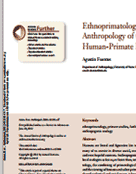
Fuentes, Agustin (2012). Ethnoprimatology and the Anthropology of the Human-Primate Interface. The Annual Review of Anthropology, Vol. 41, pp. 101–117.
Keywords: ethnoprimatology, primate studies, Anthropocene, niche construction, anthropogenic ecology
Humans are literal and figurative kin to other primates, with whom many of us coexist in diverse social, ecological, symbolic, conflictual, and even hopeful contexts. Anthropogenic action is changing global and local ecologies as fast as, or faster than, we can study them. Ethnoprimatology, the combining of primatological and anthropological practice and the viewing of humans and other primates as living in integrated and shared ecological and social spaces, is becoming an increasingly popular approach to primate studies in the twenty-first century. This approach plays a core linking role between anthropology and primate studies and may enable us to more effectively assess, and better understand, the complex ecologies and potential for sustainability in human–other primate communities. Here I review the basic theoretical underpinnings, historical contexts, and a selection of current research outcomes for the ethnoprimatological endeavor and indicate what this approach can tell us about human–other primate relations in the Anthropocene.
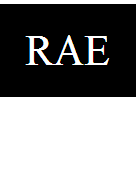
Fina Antón Hurtado (2012). ANTROPOLOGÍA DEL SINSENTIDO (Anthropology of Nonsense). Revista de Antropología Experimental, Vol. 12, pp. 349-371.
Keywords: Antropología Política. Sentido. Tiempo. Espacio. Sociedad. Cultura. Creencias y Valores. Political Anthropology. Sense. Time. Space. Society. Culture. Beliefs and Values.
The Royal Anthropology Institute (RAI) in London, has just summon assistance to encourage the research in Urgent Anthropology which aims to understand, from ethnographic studies, the perception of the current situation that people have. Throughout history, the culture has propitiated that people confer meaning to each one of the actions that take place both in the private and public fields and both in the personal and collective environments. From this point of views, my contribution tries to anthropologically analyze how the nowadays feeling of nonsense is related to the changes that are suffering the chronotope complex and through the analysis of the culture modules understand that restlessness that seems to have settled on the inhabitants of complex societies.
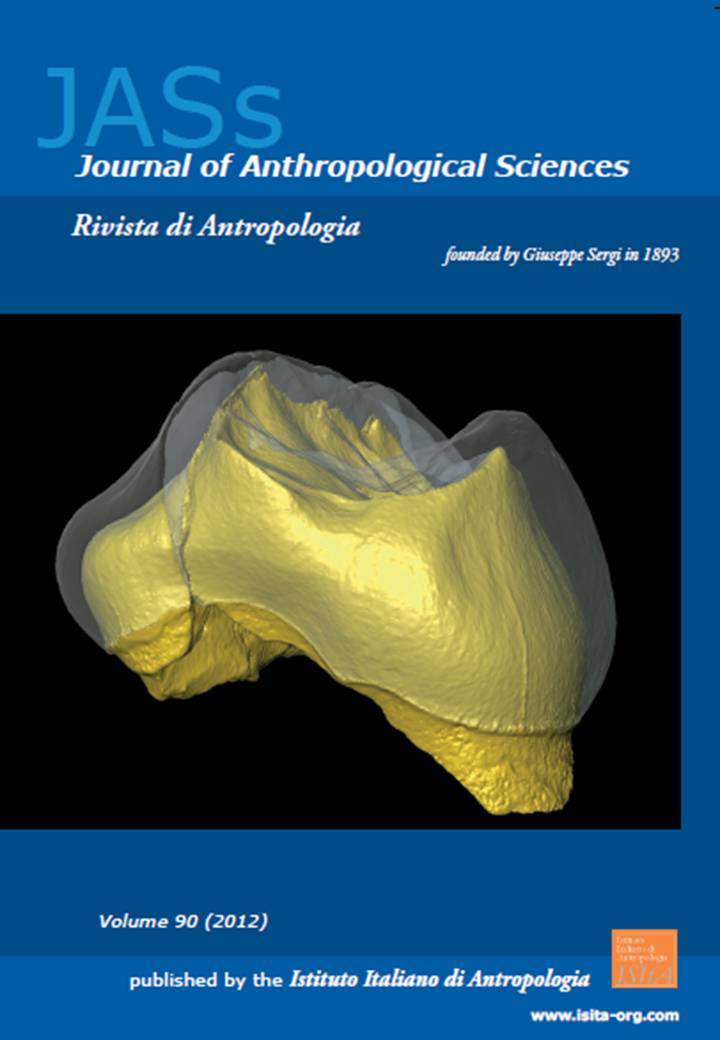
Hawks, John (2012). Dynamics of genetic and morphological variability within Neandertals. Journal of Anthropological Sciences, Vol. 90, pp. 81-97.
Keywords: Ancient DNA, population dynamics, Mousterian, Europe, Central Asia, mtDNA, Vindija, Mezmaiskaya.
Paleogenomics may suggest changes to the way anthropologists have discussed the dynamics and morphological diversity among Neandertals. Genetic comparisons show that later Neandertals had relatively low autosomal genetic variation compared to recent humans. The known mitochondrial sample from Neandertals covers a broader geographic and temporal range, and shows greater diversity. This review addresses how genetic data compare to morphological and archaeological evidence about Neandertal variation and dynamics. Traditional views emphasized the morphological differences between western and eastern Neandertal populations, and between early and later Neandertals. Genomes broadly support these groupings, without resolving the outstanding question of the affinities of specimens from southwest Asia. However, the pattern of genetic variation appears to reject a long, in situ transformation of Neandertal groups over time, suggesting instead a more rapid process of regional dispersal and partial population replacement. Archaeological indicators sample dynamics on a much finer timescale than morphological or genetic evidence, and point to dispersal and turnover among Neandertals on a regional scale. In this way, genetic evidence may provide a bridge between the timescales relevant to morphological and archaeological comparisons. New ways of looking at the morphology of Neandertals may yield a better picture of their interactions and movements.
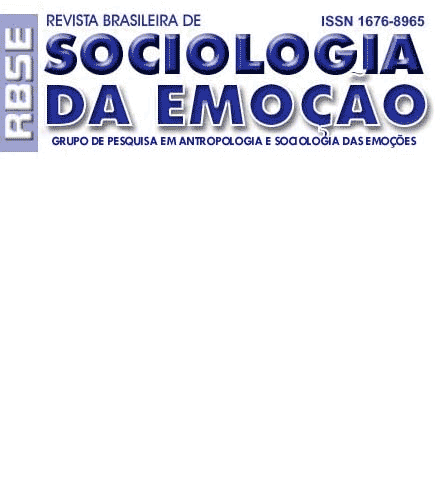
Koury, Mauro Guilherme Pinheiro (2012). Ambivallênciia nos anseios e nas ações A amizade na idade adullta (Ambivalence in desires and actions: the friendship in adulthood). RBSE – Revista Brasileira de Sociologia da Emoção, Vol.11( 33), pp. 878-883.
Keywords: friendship, individuality, competition, adulthood
This paper seeks to understand two important issues to the topic of emotions: the first question articulates the concept of friendship with adulthood and how this notion is perceived by individuals [men and women] at this stage; the second, consequence of the first, wonders if these people who experience or have experienced this phase are more selfish than in previous stages experienced.

Malassé, Anne Dambricourt (2010). The relationships between occlusion and posture in the hominid lineage, implications for the transition between mesolithic and neolithic populations. International Journal of Modern Anthropology, Vol. 1 (3), pp.12-63.
Keywords: occlusion, posture, biodynamics, ontogeny, hominids, phylogeny, evolution.
Background and Aim: Connecting the occlusion to the posture during growth consists in studying the correlations between the contact of both dental arches and the constraints acting within the skull base, at the level of the sphenoidal synchondroses. They articulate the ethmoid, sphenoid and basi-occipital anlages which are in the same alignment during the first weeks of the embryonic period. The basi-occipital belongs to the metamerised axial skeleton (petrous bones, exo-occipital, vertebral column and sacrum), the sphenoid and ethmoid belong to the prechordal territories. The simiiforms are the only mammals where embryonic kinetics breaks the alignment by a flexure sitting at the chordal-prechordal limit because of increasing tensions acting during neurulation. The degree of verticality of both facial and axial skeletons (i.e. the position of the cerebellar fossa) of the two temporo-mandibular joints and the mandibular dental arch depend on these late embryonic kinetics. The future occlusion between the maxillar and the mandibular dental arches requires coherent dynamics between the three sphenoidal synchondroses. Materials and Methods: These correlations were analyzed by using a metric methodology applied to x-rays or CT scan images of extant and fossil skulls. Results and conclusions: This approach presents major interests for the study of occluso-postural balances in fossil hominids as well as for the analysis of the evolutionary mode, tempo and phylogenetic association, in particular when dealing with the emergence of the contemporary occlusion at about 7,000 years BP. A better knowledge of this transition can be useful to understand the increasing ageneses and occluso-postural dysharmonies in modern populations.
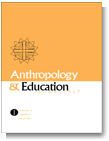
McCarty, Teresa L. (2012). Enduring inequities, imagined futures -- Circulating policy discourses and dilemmas in the anthropology of education (2010 CAE Presidential Address). Anthropology and Education Quarterly, Vol. 43(1), pp. 1-12.
Keywords: anthropology of education policy, education equity, crisis narratives, “culture of poverty”.
This article is a slightly revised version of the CAE Presidential Address delivered at the Annual Meeting of the American Anthropological Association in New Orleans, LA on November 20, 2010. The address inaugurated a CAE program change in which a full evening session was devoted to the talk, including commentaries by Hugh Mehan and Sofia Villenas, and followed by a lively discussion among all those present.
Mehan, Hugh. (2012). Reducing inequities by linking basic research and political action (Commentary on the 2010 CAE Presidential Address). Anthropology and Education Quarterly, Vol. 43(1), pp. 20-23.
Keywords: basic research, critical inquiry, social activism, language policy
In this comment, on Terri McCarty’s Presidential Address, I focus on her dynamic approach to investigation that contributes to a vibrant and constructively critical exploration of the place of basic research, critical policy analysis, and activism in the anthropology of education and the social sciences more broadly.
Villenas, Sofia A. (2012). Ethnographies de Lucha (of Struggle) in Latino Education: Toward Social Movement (Commentary on the 2010 CAE Presidential Address). Anthropology and Education Quarterly, Vol. 43(1), pp. 13-19.
Keywords: Latino education, ethnography, agency, social movements
In this article, I describe the fight back imperatives of Latino educational ethnography at a time when Latino children’s education continues to be the battleground for nation and culture wars. I briefly trace the expansion of the field of Latino educational ethnography during the last two decades, and point to the possibilities for the future of Latino ethnographies de lucha as social movement.

Monkevicius, Dra. Paola Carolina (2012). “There Did not Have to Be Black People in Argentina”: Subalterns Memories and Visibilization Among Afrodescendants and African Inmigrants in Argentina. PUBLICAR-En Antropología y Ciencias Sociales, year X, nº XII, pp. 87-105.
Keywords: social memory, community, afrodescendants, african migrants.
This work intends to analize the new process of visibilization and reconfiguration of identities among Afro descendants and African migrants in Argentina in light of an anthropology of the memory that promotes the relation among of the rememoration of subaltern pasts and the construction of senses of belonging together. For this, we have paying special attention to the actions of Afro leaders and directives, like entrepreneurs of memory, in the creation, establishment and standardisation of memory starting from a slave origin, which they use to homogenize to inside and like a tool of politic contest to outside. For that purpose, we carry out a qualitative approach resorting to the techniques characteristic of ethnographic work.

Perley, Bernard C. (2012) Zombie Linguistics: Experts, Endangered Languages and the Curse of Undead Voices. Anthropological Forum: A Journal of Social Anthropology and Comparative Sociology, 22( 2), pp. 133-149.
Keywords: Conditional cash transfers, gender, Latin America
The alarming projection that up to ninety per cent of the world's languages will become extinct by the end of this century has prompted a new sense of urgency among linguists and other language scholars to rush out and record the last utterances from the last speakers of ‘endangered languages’. As the last speaker utters her/his last words, the ‘expert’ is there to record this important moment and preserve it for all time. Among the benefits from such preservation efforts is the ability to play back the recordings at any time in any place. In popular media this process is described as ‘saving the language’ through recording and documentation. Unfortunately, these recordings are not living voices. Rather, they are zombie voices—undead voices that are disembodied and techno-mechanized. They are cursed with being neither dead nor alive. They become artefacts of technological interventions, as well as expert valorisations of linguistic codes. Expert rhetoric compounds the problem by the use of metaphoric frames such as death, endangerment and extinction. Metaphors not only frame discourses of language endangerment, but they also frame and influence actions and interventions. This essay critically evaluates the metaphors used by language experts to understand the unintended consequences for community members who are actively revitalising and reclaiming their languages. The essay also identifies key strategies used by community language activists to ignore existing metaphors, while creating new metaphors to potentiate new solutions to language death to promote emergent vitalities.
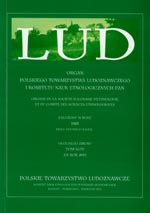
Rakowski, Tomasz (2012). Local Craft, Theory From Abroad: Jacek Oledzki’s Phenomenology. "Lud", Vol.96, pp.123-133.
Keywords: fieldwork, methodology, ethnography, phenomenology, Polish anthropology, theory of anthropology
In this article the author focuses on Polish ethnographies written between 1960-1990 by Jacek Olędzki and argues that it is possible to fi nd a particular way of seeing ethnographic details in these works. The larger part of this ethnographic knowledge was gained thanks to specifi c skills of noticing and collecting non-discursive data during fieldwork. Therefore, a certain craft of participant observation has been developed within the Polish anthropological tradition. The author refers also to seeing and understanding ethnographic details within the phenomenological/experiential literature in Western anthropology championed by Thomas Csordas, Michael Jackson and Tim Ingold. Yet, these are usually studies which express very clearly their methodological points. On the contrary, the craft of seeing and understanding in Olędzki’s ethnography is rather practiced than spelled out in the form of methodological claims. Therefore, some pertinent questions are put forward here: is there anything particular in Olędzki’s tradition of gathering ethnographic material? Is there anything comparable in his use of the experiential sources with any Western ethnographic methodologies?

Robbins, Joel (2012). Transcendence and the Anthropology of Christianity: Language, change, and individualism. Suomen Antropologi: Journal of the Finnish Anthological Society, Vol:37(2), pp. 5-23.
Keywords: Christianity, individualism, language, morality, transcendence, Westermarck
Is there anything like a unique anthropological understanding of the nature of Christianity? Although still quite new, over the last decade the anthropology of Christianity has become a robust field of discussion and debate. Given its rapid development, the time has perhaps come to consider this question. Perhaps surprisingly, a clue toward an answer can be found in Westermarck’s work. In his book on Christian Morality, Westermarck focuses on the way in which this morality constitutes a transcendent ideal that is far removed from what human beings can in reality expect to morally accomplish. Though I do not take his full argument on board, in this lecture I argue that Westermarck was right to point to Christian ideas about transcendence as one of this religion’s key features. Indeed, a focus on the nature, variety, and cultural consequences of Christian notions of transcendence is emerging as a distinctive feature of the anthropological approach to the study of Christianity. Building on this point, I suggest that exploring differences between various Christian approaches to transcendence is a key to synthesizing the most important early debates in the anthropology of Christianity. These debates have centered on 1) the ways Christians, and Protestants in particular, understand the nature and ideal uses of language; 2) the role of Christianity in fostering self-conscious efforts toward bringing about radical cultural change; and 3) the tendency of Christianity to foster various kinds of individualism among its converts. By gathering these debates together through a focus on transcendence, we can develop a specifically anthropological understanding of Christianity that not only allows for productive cross-cultural comparison, but that also helps us raise broader questions about the relation of transcendence to social life of importance across many fields of anthropology and the social sciences more generally.
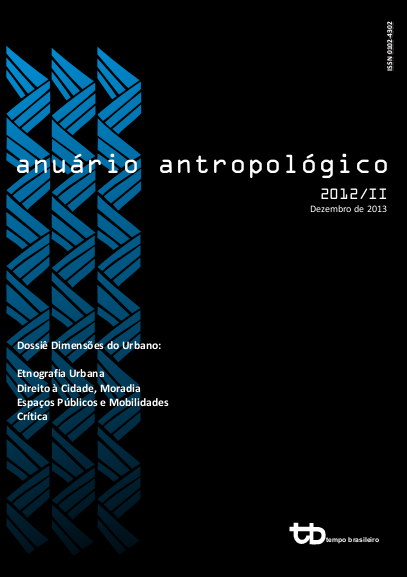
Sá, Guilherme José da Silva e (2012). Outra espécie de companhia: Intersubjetividade entre primatólogos e primatas (Company of Another Kind: Intersubjectivity Between Primates and Primatologists). Anuário Antropológico, Vol. 2011/II, pp. 77-110.
Keywords: Intersujectivity, primatologists, humans and non-humans, anthropology of science
This article addresses a very specific phenomenon of the relationship between animals and ethologists: intersubjectivity. The stories presented here are derived from a specifictype of literature produced by primatologists that exposes the relationship between primatologists, during their fieldwork, and its objects-subjects primates. Exploring the concept of intersubjectivity between different species (human and nonhuman) is intended to draw attention to elements of affection, transformation and inadequacy that make up these stories.

Sheehan, Cormac (2012). The Gender Paradox and Stories from the Edge of Living. Irish Journal of Anthropology, Vol.15(2): pp. 16-21.
Keywords: suicide; gender paradox of suicidal behaviour; ethnography; narratives; cultural scripts; lethality; socialisation; ‘numbness’ and ‘rassell’
In most countries where there has been a developed epidemiological interest in suicidal behaviour, there exists a gender paradox, where male rates of suicide exceed those of their female counterparts. Paradoxically, females deliberate self-harm and contemplate suicide more than men. This gender paradox is well discussed and documented in Ireland and elsewhere, but serves as a springboard into the discussion of ethnographically collected data about the difference between men’s and women’s stories from the edge of living, where suicide and deliberate self-harm are seen as real options. This paper concludes that ethnography has a part to play in our understanding of suicide as being part of larger tension between feeling part of ‘normal’ society, and that there are very real differences between men and women in narrating their stories from the edge of the living.

Thurston, Timothy and Tsering Samdrup (2012). An A mdo Tibetan Pastoral Family's Lo sar in Stong kor Village. Asian Highlands Perspectives, Vol. 21, pp.33-69.
Keywords: Lo sar, Mang ra, pastoral life, social and cultural change
This paper describes a single family's preparations and celebrations for the 2010 Tibetan Lo sar 'New Year' in Stong skor Village, Mang ra County, Mtsho lho Tibetan Autonomous Prefecture, Qinghai Province, PR China. It then compares the findings with other studies of Lo sar practices, and calls for more descriptive areal studies.

Trnka, Susanna, & McLauchlan, Laura. “Becoming ‘Half a Doctor’: Parent-Experts and the Normalisation of Childhood Asthma in Aotearoa/New Zealand.” Sites: A Journal of Social Anthropology and Cultural Studies vol. 9, no. 2 (2012): 3-22.
Keywords: Conditional cash transfers, gender, Latin America
In New Zealand, familial responses to childhood asthma largely pivot around the role of the parent-expert who takes primary responsibility for both the management and normalisation of his or her child’s condition. Based on a preliminary analysis of cultural texts and interviews with parents, healthcare professionals, and representatives of asthma societies, this paper argues that childhood asthma is largely accepted as being a ‘normal’ part of life, to the extent that parents and health professionals alike note that the dangerousness of this condition is frequently under-recognized. Strategies for both managing and normalising asthma are heavily reliant upon pharmaceutical therapies, though some attention is also paid to mitigating environmental triggers. Central to these endeavours is the role of the primary caregiver who, with input from General Practitioners, frequently adopts the position of the parent-expert in managing the idiosyncrasies of his or her child’s condition. Little emphasis is placed on collective therapeutics or social action, as the primary focus is on individually-tailored familial-based management of children’s symptoms.

Villenas, Sofia A. (2012). Ethnographies de Lucha (of Struggle) in Latino Education: Toward Social Movement (Commentary on the 2010 CAE Presidential Address). Anthropology and Education Quarterly, Vol. 43(1), pp. 13-19.
Keywords: Latino education, ethnography, agency, social movements
In this article, I describe the fight back imperatives of Latino educational ethnography at a time when Latino children’s education continues to be the battleground for nation and culture wars. I briefly trace the expansion of the field of Latino educational ethnography during the last two decades, and point to the possibilities for the future of Latino ethnographies de lucha as social movement.

Zhouri, Andréa and Raquel Oliveira (2012). Development and Environmental Conflicts in Brazil: Challenges for Anthropology and Anthropologists. Vibrant, Vol.9 (1), pp. 183-208.
Keywords: conflict; anthropological knowledge; environmental licensing process.
In the last three decades, since the democratization of the country and the rise of environmental concerns, Brazil has created a regulatory framework capable of dealing with the environmental impact of its core developmental policies. An environmental governance package has been constructed, with the environmental licensing process as its major instrument. However, this process is based on an urban planning perspective with little assessment of specific local ecological conditions and social organizations. Indeed, the process of globalization has resulted in an intensive exploitation of natural resources, which increases the use of marginal economic areas and the expansion of the economic frontiers into territories occupied by family agriculture, traditional peoples and ethnic minorities. Hence, we see the creation of conflict zones involving locals, state sectors and entrepreneurial groups. Increasingly, within this context, anthropologists have been required to act as experts and mediators by different groups, including state institutions, private companies, and social movements. Based on ethnographic research about the environmental licensing processes of hydroelectric dams in Brazil, this paper focuses on the limits of anthropological knowledge, the contexts of its production and the role of anthropologists in political processes involving unequal networks of power.
